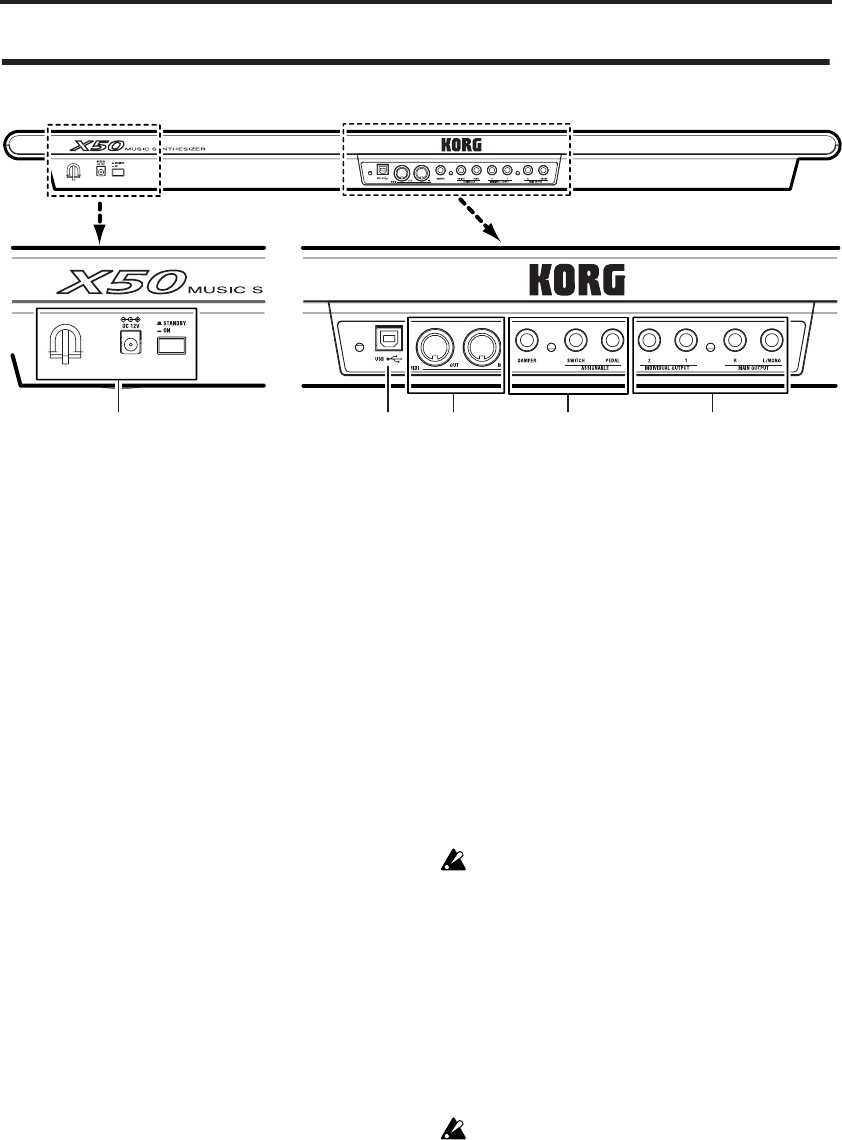
Introduction
14
Rear panel
1. AUDIO OUTPUT
Connect these outputs to the input jacks of your
amp or mixer. In addition to the (MAIN OUTPUT)
L/MONO and R main stereo audio outputs, the X50
provides two individual audio outputs. (
☞
p.25)
MAIN OUTPUT L/MONO, R jack
INDIVIDUAL OUTPUT 1, 2 jack
2. PEDALS
You can connect a damper pedal, foot switch, and
foot pedal to these jacks. This gives you a broader
range of functions and effects to control. (☞p.26)
ASSIGNABLE PEDAL jack
ASSIGNABLE SWITCH jack
DAMPER jack
3. MIDI
MIDI lets you connect X50 to computers or other
MIDI devices, for sending and receiving notes,
controller gestures, sound settings, and so on.
(☞p.34)
MIDI IN connector
MIDI OUT connector
4. USB
USB connector
(for connecting to computer)
You can connect your computer to this connector.
Using a single USB cable, your X50 can send and
receive MIDI information directly to and from a
computer, without requiring a MIDI interface.
(☞p.31)
What is USB?
USB stands for Universal Serial Bus, and is an
interface for transferring data between a com-
puter, a keyboard and/or peripheral devices.
Note: The USB connector of the X50 is only able to
transmit and receive MIDI data.
5. Power supply
Be sure to see “Turning the power on/off” (
☞
p.23)
and follow the correct procedure described there.
Power switch
This switch turns the power on/off.
AC adapter connector
Connect this to the included AC adapter.
Connections must be made with the power
turned off. Please be aware that careless
operation may damage your speaker system
or cause malfunctions.
Cable hook
Use this to secure the cable of the included AC
adapter. After connecting the AC adapter, fasten
the cable around the hook located on the X50’s
rear panel so that the cable will not be pulled out
inadvertently. Leave enough slack on the plug end
so that you can disconnect it if you want to.
Be careful not to bend the base of the plug any
more than necessary.
1
2
4 35


















